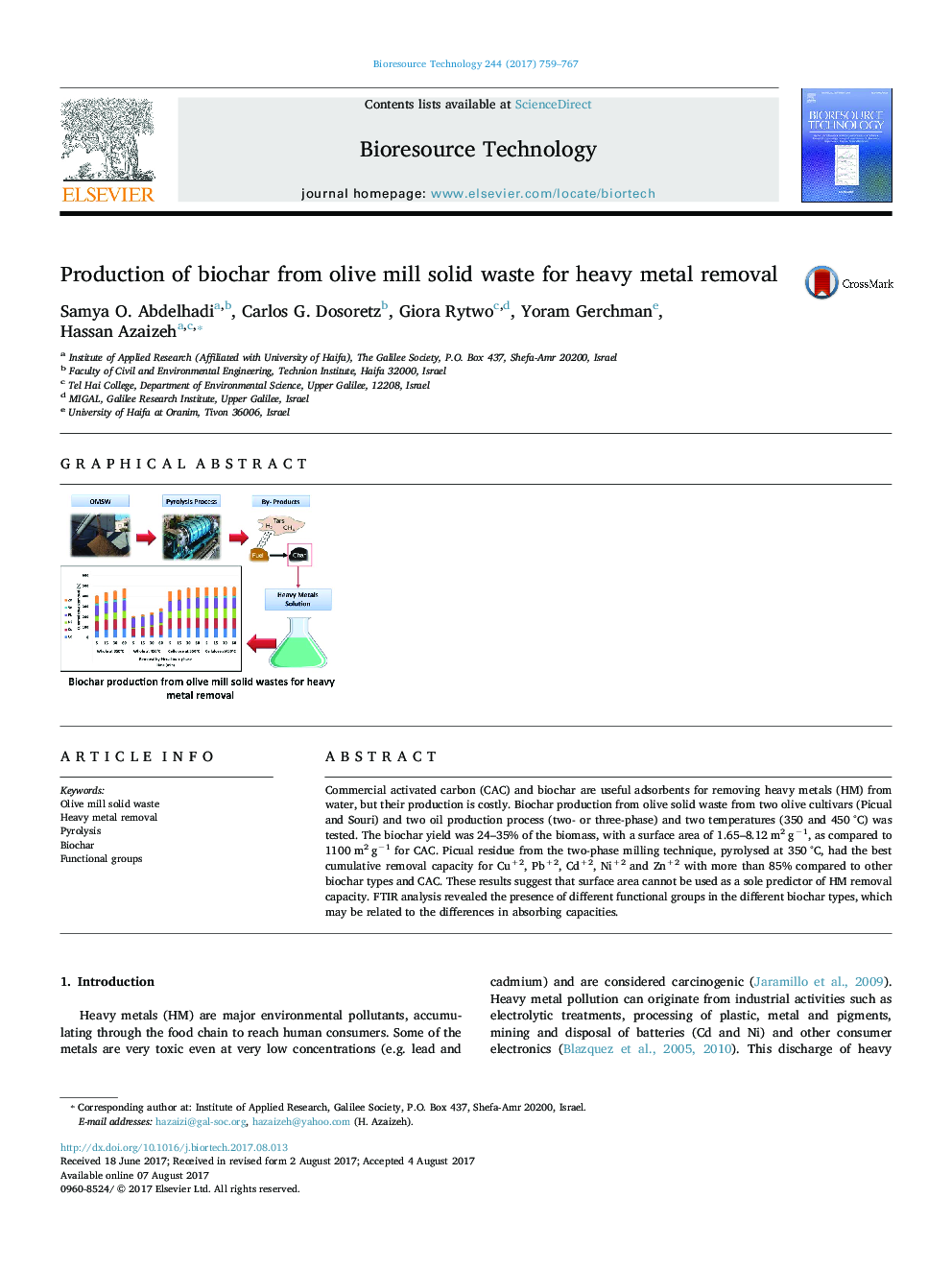| Article ID | Journal | Published Year | Pages | File Type |
|---|---|---|---|---|
| 4996546 | Bioresource Technology | 2017 | 9 Pages |
â¢The yield of the produced biochar from OMSW was depended on pyrolysis temperature.â¢The removal capacity for heavy metals (HM) depended on cultivar and processing type.â¢The best HM removal obtained using Picual-cellulose of two-phase produced at 350 °C.â¢The FTIR showed more significant absorption bands are related to remains of cellulose.
Commercial activated carbon (CAC) and biochar are useful adsorbents for removing heavy metals (HM) from water, but their production is costly. Biochar production from olive solid waste from two olive cultivars (Picual and Souri) and two oil production process (two- or three-phase) and two temperatures (350 and 450 °C) was tested. The biochar yield was 24-35% of the biomass, with a surface area of 1.65-8.12 m2 gâ1, as compared to 1100 m2 gâ1 for CAC. Picual residue from the two-phase milling technique, pyrolysed at 350 °C, had the best cumulative removal capacity for Cu+2, Pb+2, Cd+2, Ni+2 and Zn+2 with more than 85% compared to other biochar types and CAC. These results suggest that surface area cannot be used as a sole predictor of HM removal capacity. FTIR analysis revealed the presence of different functional groups in the different biochar types, which may be related to the differences in absorbing capacities.
Graphical abstractDownload high-res image (143KB)Download full-size image
